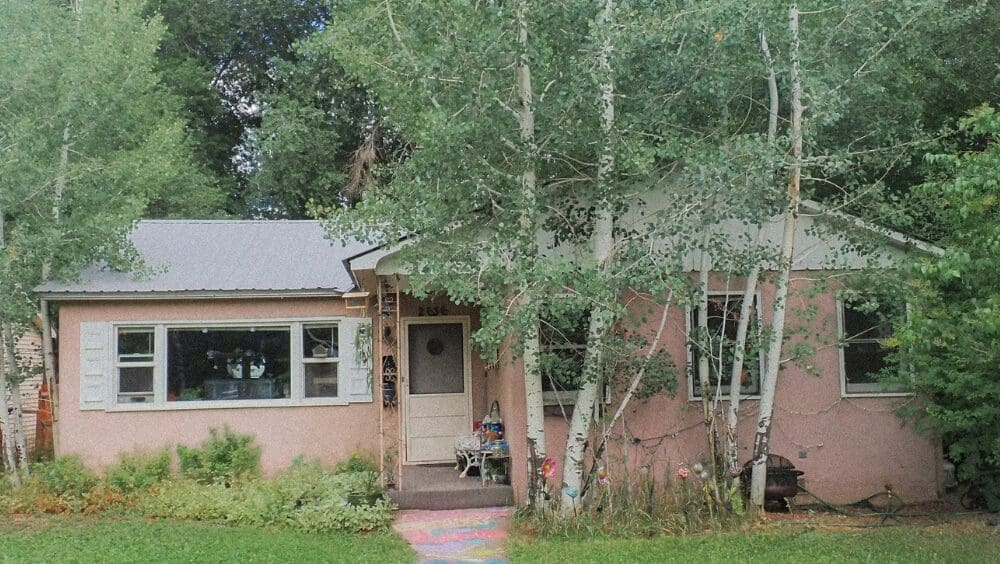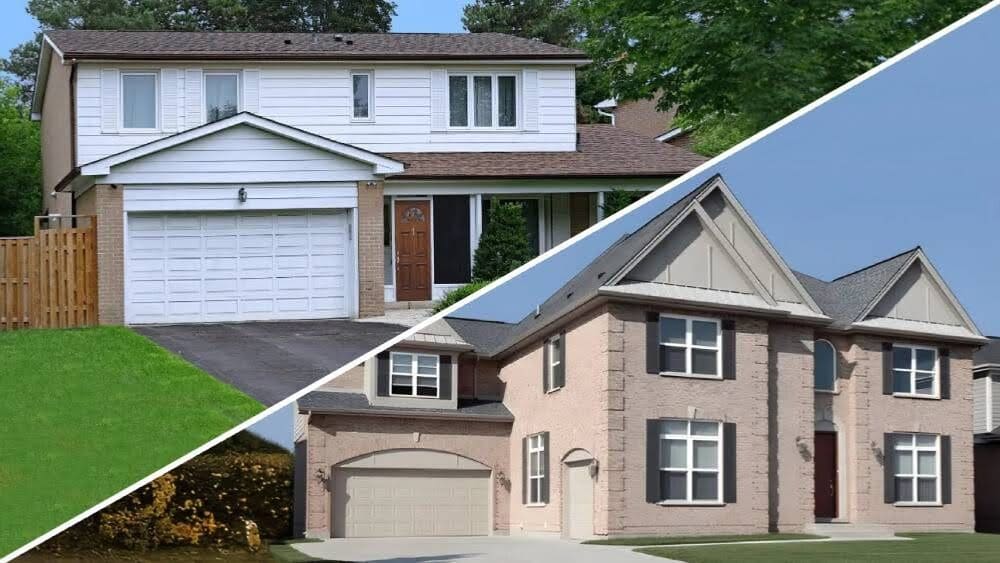
Are you looking to sell your home “as is” in Colorado? Whether you’ve got a fixer-upper or recently inherited a relative’s home, sometimes the goal is to skip repairs, get a fair offer, and move on. Why do sellers consider selling making a as-is home sale? There are several reasons, which can range from a sudden change in circumstances, to the seller needing to access the equity in their home without making repairs. “It’s going to be for people that are basically going through a situation in life that is a life-changing moment. I’m talking about a divorce or perhaps the death of the husband or the wife and then the next of kin. They don’t wanna deal with anything that potentially happens with the property,” says Max Sepulveda, a top-selling agent in the Fort Collins, Colorado area, and member of Rob Kittle’s real estate team. However, selling a house “as is” usually means accepting a lower offer, and it doesn’t always prevent buyers from trying to negotiate savings. This guide will take a closer look at the process of selling a house “as-is” in Colorado, your options for getting an offer, and what to expect from the process. “As is” is a type of home sale where it’s understood that no improvements will be made to the property. When selling a house, “as is,” the seller is choosing not to entertain buyer requests to complete repairs or provide a credit for fixes. An as-is sale may also indicate that the functionality and longevity of certain home components, such as a stove on its last legs or an older roof, is not guaranteed. When selling a house “as is,” the general condition of the property should already be accounted for in the home’s purchase price to the best of the seller’s knowledge. Homes sold “as is” often need work or are possibly cosmetically outdated. It’s not a label you’ll likely put on a listing in pristine, move-in-ready condition. “As is” sales often attract investors searching for their next flip or buyers seeking a bargain, perhaps on a home in a great location with lots of potential. Sepulveda says the types of properties sold “as is” can vary. “It’s gonna be residential [properties] and farms as well. Properties with a lot of land or in a really bad condition because of tenants, because of non maintenance on the property,” he says. Selling a house “as is” in Colorado doesn’t mean sweeping known problems about the house under the rug. A good time to fill out Colorado Residential Property Disclosure is before listing your home or requesting an offer so that you know it’s taken care of. According to the document, sellers must any details about the property being in poor condition, which can include, but is not limited to, structural defects, soil conditions, violations of health, zoning or building laws, and nonconforming uses and zoning variances. The state’s form will walk you through documenting what you know about the property’s structural conditions, roof, electrical and telecommunications systems, mechanical aspects, ventilation, water and sewer systems, flooding and drainage, access and parking, environmental conditions, common interest community-association property, and other necessary disclosures. You’ll also be prompted to fill out information about: No matter what method you choose to sell your home, you must make these disclosures to the best of your ability. However, Colorado does not allow certain exceptions for sellers. Sepulveda adds that while all disclosures are important (and essential) for anyone selling their home, disclosing information about the property’s water or total square footage is particularly crucial. “Make sure they post absolutely everything that is going on with the house that they’re aware of just to avoid any potential issues at an inspection. The other one it’s going to be their water source disclosure,” he says. “Because obviously you want to ensure that if the house a well, that at least you present the well system, and the septic system as well, that’s gonna be very important. And then the other one is going to be the square footage disclosure to make sure that people are least aware of the total square footage of the property.” He adds that major things like the roof and the home’s HVAC system are going to be particularly scrutinized, so it’s good for would-be sellers to have an idea about what repairs (if any) those might need. “Me as a realtor, one of the first questions I always ask is how old the roof is. It’s that simple. The roof is something that is here in Colorado can be a hit or miss, some areas get a lot of hail or the areas they don’t but definitely the roof is a very important factor,” he says. A great real estate agent will assist in the process of listing and selling a home “as is.” An agent gives simple presentation tips to improve marketing, helps to set an appropriate price that reflects the home’s condition, and works to find a buyer willing and eager to buy your home in its current state. Someone needing to sell their home “as is” can also work directly with a property investor or house-buying company rather than list, where it may be difficult to get an offer from a limited buyer pool. We Buy Houses operations buy “as is” at a discounted rate and generally seek out homes in need of significant repairs. These companies can help sellers cash out quickly, and many will cover a seller’s closing costs. Find an agent willing to list the home ‘as is’
Your choice of real estate agent always matters, but especially when selling a property “as is.” It’s important to find the right match. You’re looking for an agent who doesn’t shy away from listings that need a little TLC and maybe has a strong network of investor connections. Your agent should also be willing to go the extra mile on marketing. Considering 80% of Americans say they would prefer to buy a move-in ready home, an “as is” sale likely has a reduced buyer pool from the start. A pre-listing home inspection is the same as a standard one except that the seller pays for it before listing their home on the market. It may sound like a counterintuitive step for an as-is sale, but getting the inspection results upfront can illuminate any issues that could impact the value of the home and inform an accurate pricing strategy. If a buyer requests further deductions to the price based on their own inspection, you may be able to point to how the estimated cost of certain repairs was already baked into the list price. Sepulveda says that a pre-listing inspection is generally a good idea, as it gives the sellers more information about the condition of the home so that there are no surprises when it comes time for the appraisal. “The ability to disclose properly on the seller property disclosure and to know for sellers if any of these items are potentially going to arise at the appraisal. So, the appraisal is a second inspection that is done on the property,” he says. “So, even if you are not willing to pay for our inspection repairs or something, if it is gonna pop-up in the appraisal, unfortunately, it needs to be done in order to close, right? It’s that simple,” he says. “Having a pre-inspection report is going to ease the mind of the sellers on terms of knowing exactly what could potentially go wrong during the transaction to avoid having the property extra days on the market,” he adds. The median sale price for homes in Colorado hit $545,000 in December 2023, a 1.7% decrease over the year prior. You can start with a free estimate from HomeLight’s Home Value Estimator (HVE). Our HVE combs public data, including tax records and assessments, and pulls recent sales records for other properties in your neighborhood. Using a short questionnaire, we also factor in specifics about your home, such as the property type and described condition. Input your address, and we’ll provide you with a preliminary home value estimate in under two minutes. Even for as-is home listings in Colorado, Sepulveda typically recommends sellers tailor their preparations to the condition and type of property. “Depends on the marketing and depends on the condition of the property. If the condition of the property, if it’s in good condition it’s just a matter of cleaning it, making sure that it’s all good,” he says. “But if it is a mountain property, for example, it’s going to have some rodent infestation or something like that. Just try to remove it like make it cosmetically pleasant, they can actually help you with that. But, I mean, at the end of today it’s always good to just have us sweep and clean, making sure that the house looks in the best possible condition,” he adds. Your home listing warrants professional photography no matter what condition the property is in. A professional photographer will take steps to shoot each room from the best angle, ensure optimal interior and natural lighting, and edit for the ideal brightness and exposure. A high-quality camera with a wide-angle lens is also essential to showcasing entire rooms rather than half or three-quarters of what’s there. For these reasons and more, professionally photographed homes can help earn homeowners up to a 47% higher asking price per square foot compared to houses marketed without professional photos. Your real estate agent will almost always arrange for professional photos as part of the listing process. A home’s location will be important to buyers seeking out a home with potential. Mention in your as-is listing if your home is close to any of the following: Unless you explicitly mention that your house is being sold “as is,” buyers will have no idea of your intentions with the listing. Other common descriptors mentioned in Colorado as-is listings include price to sell, fixer-upper, handyman special, or a “call for investors.” To balance the focus on as-is condition, work with your agent to craft a property description that highlights the best features of the home. Listing “as is” provides no guarantee that buyers won’t try to negotiate savings on their purchase, even on an asking price you felt was already reduced to reflect the home’s condition. One of the best defenses you can have is an agent who takes a hard stance to prevent a deal from going south for the seller. When you place your home on the market, it’s hard to predict if your top offer will come from a cash buyer or a buyer pre-qualified for a home loan. But if you do end up working with a financed buyer, be aware that different mortgage types (such as conventional loans or government-backed FHA, USDA, or VA loans) have different minimum property standards. These are standards related to the overall condition of a property which will play a role in a lender’s willingness and/or ability to finance a buyer’s loan. Before properties can be financed, their value and condition is typically examined by a state-licensed, independent appraiser contracted by the buyer’s mortgage company. If you’re unsure whether your home will meet appraisal requirements, you can start by looking at the FHA minimum property standards. If your house complies with FHA, it complies with most other lenders’ requirements. On occasion, conventional lenders may even finance a fixer-upper property sold “as is,” and it’s not impossible to finance a fixer-upper with an FHA loan. However, if you’re selling a house “as is” — especially one that needs heftier repairs — you may want to consider accepting a cash offer if you receive one. Cash eliminates the lender-ordered appraisal and the time it takes to close on the buyer’s loan, creating a faster and clearer path to settlement. Now that we’ve covered the general process of listing a home “as is,” let’s discuss the alternative of working with an investor. While the process varies from business to business, the steps to selling your home to a house-buying company typically go something like this: If you aren’t sure where to get a cash offer, consider Simple Sale, a solution from HomeLight. With Simple Sale, you tell us a bit about your home, such as whether it’s a single-family or condo and how much work it needs. From there, we’ll provide you with a full cash offer to buy your home in as little as a week. No need to call the roof inspector or drain your savings to replace the HVAC. HomeLight will provide an offer for homes in almost any condition. Want to get out right away? Or need a little more time to pack? Either way, we’re flexible. Pick a move date that works for your schedule within 30 days of closing. Cash buyers don’t need a lender’s involvement to purchase a home, meaning they can move nimbly and quickly compared to someone who needs financing. With Simple Sale, you can close in as little as 10 days, compared to the 30-60 days or longer it typically takes to close with a financed buyer. Curious to know more about the Simple Sale experience? Hear it firsthand from one of our valued clients in the video below.Fast facts about selling a house ‘as is’ in Colorado
Median sales price in Colorado
$545,000
Average days on market (DOM) for Colorado
50
Disclosures
Colorado law requires sellers to disclose material facts about the property through the Colorado Seller’s Property Disclosure Form.
MLS has a field to mark a listing “as is”?
Yes
Is a real estate attorney required?
Real estate attorneys are not considered essential for closing in the state of Colorado.
Real estate transfer taxes?
$0.01/$100
What is ‘as is’ condition in real estate?
Which types of homes are sold ‘as is’?
What problems do you have to disclose in Colorado?
Hazards, disputes, or violations
Material defects in the structure or systems
Unsafe conditions related to the home
Review your options to sell ‘as is’ in Colorado
The main options to sell a house ‘as is’ include:
List ‘as is’ with the help of a real estate agent
Sell directly to a cash buyer
Steps to list ‘as is’ with the help of a real estate agent
Consider a pre-listing inspection
Price to reflect ‘as is’ condition
Do ever-so-light preparations
Photograph to show potential
Highlight the surrounding area
Include ‘as is’ in the listing
Understand buyers may still negotiate
Be aware of minimum property standards for certain loans
Prioritize a cash offer if you receive one
Pros of listing a home ‘as is’:
Cons of listing a home ‘as is’:
Steps to sell directly to a cash buyer
Skip repairs
Sell when it’s convenient
Close with certainty



